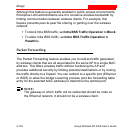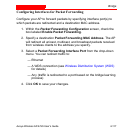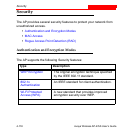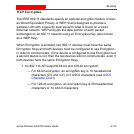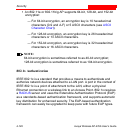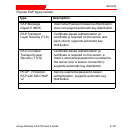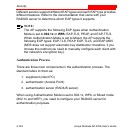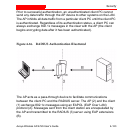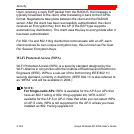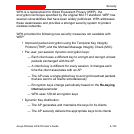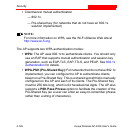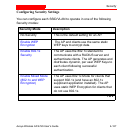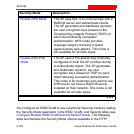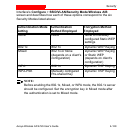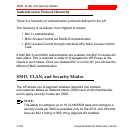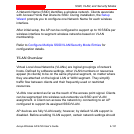
Security
4-124 Avaya Wireless AP-4/5/6 User’s Guide
Upon receiving a reply EAP packet from the RADIUS, the message is
typically forwarded to the client, after translating it back to the EAPOL
format. Negotiations take place between the client and the RADIUS
server. After the client has been successfully authenticated, the client
receives an Encryption Key from the AP (if the EAP type supports
automatic key distribution). The client uses this key to encrypt data after it
has been authenticated.
For 802.11a and 802.11b/g clients that communicate with an AP, each
client receives its own unique encryption key; this is known as Per User
Per Session Encryption Keys.
Wi-Fi Protected Access (WPA)
Wi-Fi Protected Access (WPA) is a security standard designed by the
Wi-Fi Alliance in conjunction with the Institute of Electrical and Electronics
Engineers (IEEE). WPA is a sub-set of the forthcoming IEEE 802.11i
security standard, currently in draft form. (IEEE 802.11i is also referred to
as “WPA2” and will be available in 2004.)
NOTE:
For Single-radio APs: WPA is available for the AP-6 (or APs that
have an 802.11a/b/g or 802.11b/g upgrade kit). WPA is NOT
available for the AP-5 or AP-4. Note that while you can select WPA
on AP-5 units, WPA is not supported for the AP-5 unless you have
installed an 802.11a/b/g upgrade kit.



